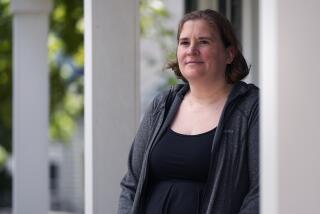Officials Take Hard-Line Truancy Stance : Schools: A criminal charge has been filed against a woman whose son repeatedly missed class. Officials say it’s a message to parents.
- Share via
Leticia Delava says that her 12-year-old son often wakes up with stomachaches, so she calls the sixth-grader’s school in Downey and says he won’t be coming in.
But officials of the Downey Unified School District say Delava’s son has skipped classes repeatedly in the past two years--including at least 30 times since last October--and they aren’t buying Delava’s contention that her son’s absences are legitimate.
The school district turned the case over to the district attorney’s office, which last week took the unusual step of filing a criminal charge in the truancy case. Delava was charged with contributing to the delinquency of a minor, a misdemeanor punishable by up to a year in jail and a $2,500 fine. She is set for arraignment July 15 in Downey Municipal Court.
Thomas Higgins, the deputy district attorney handling the case, believes this is the first time that the state Criminal Code has been used to enforce school attendance.
“We’re sending a message to parents,” he said, adding that more parents of elementary schoolchildren with frequent absences may face criminal misdemeanor charges if this prosecution is successful. “We want them to be aware that there are serious consequences for not ensuring that their child gets an education,” he said.
In truancy cases involving children 12 years old and younger, parents generally are cited under the state Education Code, which carries a fine of up to $500. (Students over the age of 12 can be taken before a Juvenile Court judge, who could order them to spend up to five days in a juvenile facility, but generally places them on probation.)
“We’ve had some success (citing parents under the Education Code),” Higgins said, “but we’ve had a constant perception by parents and children that the consequences aren’t too meaningful.”
As a result, Higgins said, he began exploring the possibility of filing criminal charges against parents whose children miss too much school. He said he chose the Downey case because of the school district’s strong track record in pursuing truancy cases, and the fact that the case had gone as far as it could at the school district level.
“There are some worse cases, and some cases that are less worse,” Higgins said. “We wanted to get something very average; (the Delava case) is neither the most serious nor the least serious.”
School district officials say they began noticing the Delava child’s excessive absences about two years ago. In 1989, they said, Leticia Delava attended a hearing of the school attendance review board--a body consisting of school district representatives--at which she signed a contract agreeing to provide doctors’ notes or allow school nurses’ examinations for any future absences.
But she failed to provide medical documentation for the 30 absences since October, school officials said.
Delava said she doesn’t remember promising to provide doctors’ notes. She said she hasn’t taken her son to a doctor in some time because “once he gets to the doctor he’s fine.”
But she insisted that “every time he’s been out it’s been legitimate. The boy’s been sick.” Referring to the recurring stomachaches, she said, “I think it’s just stress.”
But although officials have acted on the Delava case to catch parents’ attention, some school district officials say that the number of truancy cases is holding steady or, in some cases, decreasing.
Truancy cases in the Long Beach Unified School District, for example, dropped from 420 in the 1989-90 school year to 350 in the year just ended, according to Arthur Kraft, supervisor of attendance services. About 71,500 students attended Long Beach district schools this year.
Kraft believes that sanctions under the Education Code have generally been effective.
“Just the fact of going to court gets the parents’ attention,” said Kraft, adding that he does not favor more serious criminal sanctions against the parents. “This is not your normal criminal activity. These are people who can’t get up in the morning.”
In Downey, which has about 15,500 students, the number of habitual truants per year has remained relatively constant at about 95.
But administrators are concerned that truants often become dropouts, said Stan Hanstad, director of pupil services for the Downey district.
“We can see the patterns developing as early as kindergarten,” Hanstad said. “Excessive absences are red flags; as they get older, these kids fall farther and farther behind; their images of themselves get lower and lower, and pretty soon they’re dropouts.”
Increasing the potential penalties for parents of elementary-school truants, he said, is a step in the right direction. “Parents are responsible for the actions of their children,” he said. “It can be a real deterrent. The way to prevent this is by getting (the students) young.”
More to Read
Sign up for Essential California
The most important California stories and recommendations in your inbox every morning.
You may occasionally receive promotional content from the Los Angeles Times.













